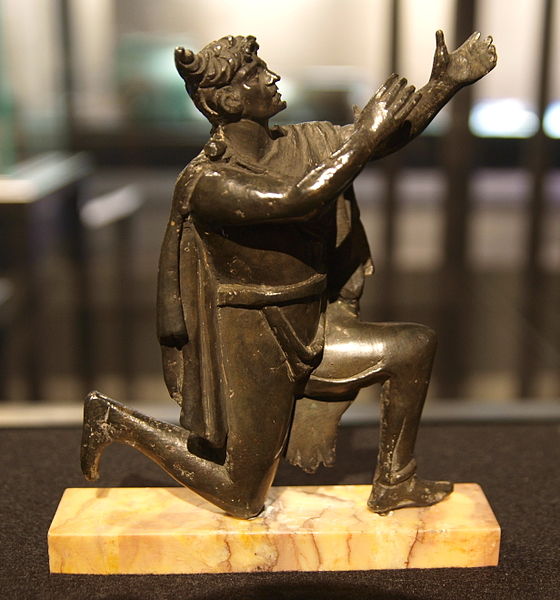Fitxer:Bronze figure of a German Bibliothèque Nationale.jpg

Mida d'aquesta previsualització: 560 × 600 píxels. Altres resolucions: 224 × 240 píxels | 448 × 480 píxels | 717 × 768 píxels | 956 × 1.024 píxels | 2.461 × 2.635 píxels.
Fitxer original (2.461 × 2.635 píxels, mida del fitxer: 2,05 Mo, tipus MIME: image/jpeg)
Historial del fitxer
Cliqueu una data/hora per veure el fitxer tal com era aleshores.
| Data/hora | Miniatura | Dimensions | Usuari/a | Comentari | |
|---|---|---|---|---|---|
| actual | 00:13, 8 gen 2012 |  | 2.461 × 2.635 (2,05 Mo) | Bullenwächter | {{Information |Description ={{en|1=Roman bronze figure often referred to as the "Praying Germanic" found in the National Library in Paris, France in the late 19th century.}} {{de|1=Die als "Betender Germane" bezeichnete römische Bronzestatuette, die i |
Ús del fitxer
Les 2 pàgines següents utilitzen aquest fitxer:
Ús global del fitxer
Utilització d'aquest fitxer en altres wikis:
- Utilització a als.wikipedia.org
- Utilització a azb.wikipedia.org
- Utilització a bn.wikipedia.org
- Utilització a cs.wikipedia.org
- Utilització a de.wikipedia.org
- Utilització a el.wikipedia.org
- Utilització a en.wikipedia.org
- Utilització a eo.wikipedia.org
- Utilització a es.wikipedia.org
- Utilització a fa.wikipedia.org
- Utilització a fi.wikipedia.org
- Utilització a fr.wikipedia.org
- Utilització a fy.wikipedia.org
- Utilització a gl.wikipedia.org
- Utilització a he.wikipedia.org
- Utilització a hr.wikipedia.org
- Utilització a hy.wikipedia.org
- Utilització a ko.wikipedia.org
- Utilització a lfn.wikipedia.org
- Utilització a no.wikipedia.org
- Utilització a oc.wikipedia.org
- Utilització a pt.wikipedia.org
- Utilització a ru.wikipedia.org
- Utilització a sv.wikipedia.org
- Utilització a tr.wikipedia.org
- Utilització a uk.wikipedia.org
- Utilització a ur.wikipedia.org
- Utilització a www.wikidata.org



